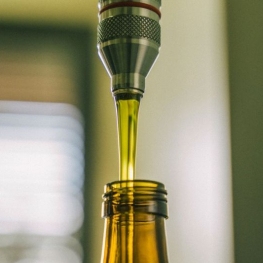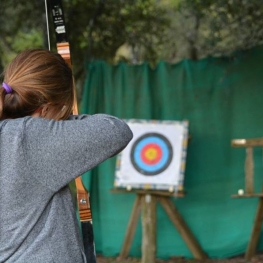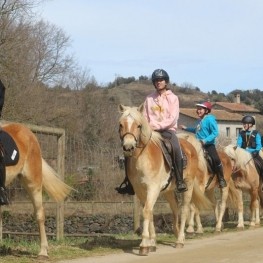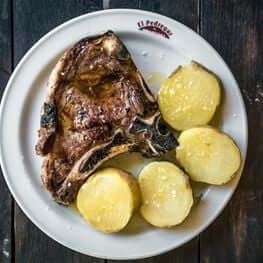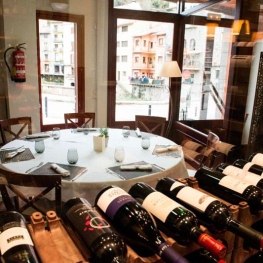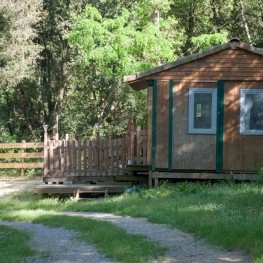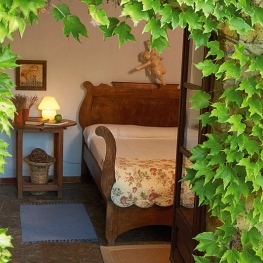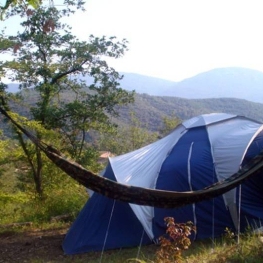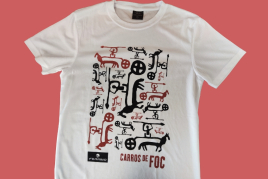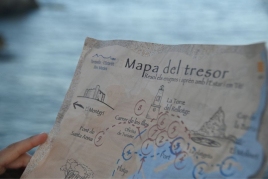Route through the stone villages of Girona
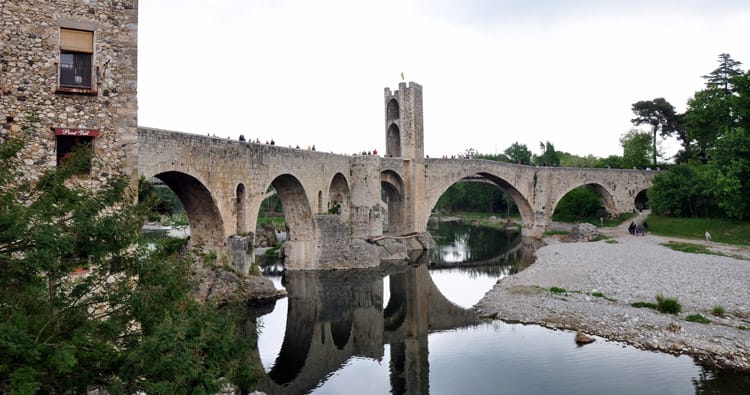
Since the beginning of civilization, stone has been a material used and present to make life easier for humans; We can remember how the Romans used this raw material to build their recreational spaces as the prehistoric ones, specifically during the stone age, made tools. Also during the middle ages the stone had its importance.
For this reason, from femTurisme we want to propose a "circular" route that runs through the central area of the province of Girona and that we can carry out in sections.
We have made a selection of medieval towns that are located, exactly, in the counties of Gironès, Garrotxa and Baix Empordà, so that you enter and let yourself be carried away by towns or large cities built stone on stone, which gives to its streets a grayish hue.
A route that can be done at any time of the year and that you can adapt according to your preferences!
The Middle Ages, a time of splendor in Catalonia
 The year 1000, approximately, is a remarkable date in Catalan history since it is when the birth of Catalonia with its own identity and differentiated from other regions that existed at the time is located. The independence of Catalonia arose as a consequence of the rupture of the pact of vassalage of the Frankish king by Borrell II, Marquis of Catalonia and grandson of Guifré el Pelós. Also, it was in this century that the counties became independent. At least until the fifteenth century.
The year 1000, approximately, is a remarkable date in Catalan history since it is when the birth of Catalonia with its own identity and differentiated from other regions that existed at the time is located. The independence of Catalonia arose as a consequence of the rupture of the pact of vassalage of the Frankish king by Borrell II, Marquis of Catalonia and grandson of Guifré el Pelós. Also, it was in this century that the counties became independent. At least until the fifteenth century.
The counties were created to guarantee the defense of the Hispanic brand against Al-Andalus since the emperors could not take charge of the territory personally and in this way, these fractions of territory were administered by a count. At that time, Old Catalonia was divided into six counties; one of them is Girona - Besalú.
Old Catalonia is understood as the region that initially adopted the name of Catalonia. This territory was made up of the northern part of Catalonia up to the Llobregat, the Anoia, the Segre and Montserrat.
Girona County
 As we have commented previously, one of the counties that was created in the 8th century was the county of Besalú – Girona, which later separated (end of the 11th century). The county of Girona stretched from the Mediterranean Sea to Montseny and Tordera.
As we have commented previously, one of the counties that was created in the 8th century was the county of Besalú – Girona, which later separated (end of the 11th century). The county of Girona stretched from the Mediterranean Sea to Montseny and Tordera.
The route that we present to you this month is started in the city of Girona. And to do so we have to highlight the figure of a historical character and king of the Franks during the year 768 and 814, Carlemany, who was granted the symbolic conquest of the territories that are located in the south of the Pyrenees. Exactly, it was the year 785 when Girona passed under his power.
There are living samples that indicate its presence in Girona, such as the Carlemany Tower (Romanesque bell tower of the Girona Cathedral) and the Carlemany chair.
 But, before visiting these two elements, we recommend that you approach the walls that are on the southern side of the Onyar and follow the uniform streets of the city. The wall is built with the well-known Girona stone, which is a type of calcareous rock that was removed from the quarries that were located around the town in the past.
But, before visiting these two elements, we recommend that you approach the walls that are on the southern side of the Onyar and follow the uniform streets of the city. The wall is built with the well-known Girona stone, which is a type of calcareous rock that was removed from the quarries that were located around the town in the past.
The main façade and the stairs of the cathedral, the stone bridge, the Agullana palace, among other buildings, are also made of this stone.
In addition, if we visit this city during the month of May we can enjoy the streets adorned with various flowers since the festival of " Girona en temps de flors " (Gerona in times of flowers) is celebrated annually.
The medieval villages of the volcanic zone
 Once we have visited the city of Girona, we will go to Santa Pau (Garrotxa). We will travel through the N-IIA national road, which will later connect with the C-66 region.
Once we have visited the city of Girona, we will go to Santa Pau (Garrotxa). We will travel through the N-IIA national road, which will later connect with the C-66 region.
Santa Pau was part of the county of Besalú. During the 8th century, the latter was part of the county of Girona, from which it became independent in the 9th century.
The town is located in the middle of the Garrotxa Volcanic Zone Natural Park. But, on this occasion, we will not talk about the Santa Margarida Volcano or the Fageda d'en Jordà, but rather we will focus on the medieval town itself, which is worth visiting, although if after walking around the town, you have plenty of time and you feel like it, you can take a walk through its natural environment.
See the " Volcanoes and other charms of La Garrotxa " route .
The medieval Barony of Santa Pau was declared a historic-artistic site in 1970. In it we can enjoy the tranquility transmitted by its porticoed Plaza Mayor, known as Firal del Bous, which is presided over by the Gothic church of Santa Maria. The houses located around the square are attached to the wall. Also from this period, it is worth visiting its large castle with a square floor plan, which has become a symbol of Santa Pau.
 After enjoying this town that preserves its medieval structure and that the cobblestone streets have seen so many years go by, we will head towards the quintessential Catalan medieval municipality, Besalú. To do so we will take the CI-524 road and then the A-26 motorway.
After enjoying this town that preserves its medieval structure and that the cobblestone streets have seen so many years go by, we will head towards the quintessential Catalan medieval municipality, Besalú. To do so we will take the CI-524 road and then the A-26 motorway.
This county town was born from the establishment of the castle of Besalú on top of the mount of Santa Maria. Later, the city was dressed with other buildings within the walled enclosure; such as, for example, the famous Besalú bridge that gave access to the town, the church of the Monastery of Sant Pere, the Royal Curia (which reveals the great political power that this municipality had in medieval times), the Casa Llaudes, the Plaza Mayor and the Jewish Call with the Miqvé (Jewish baths).
In Besalú, too, we must highlight the presence of Count Tallaferro, who left his mark on this town and where today we find a street that bears his name. Don't forget to wander over there!
The imprint of the stone in the Baix Empordà
The Baix Empordà also offers beautiful corners created and built with stone, Torroella de Montgrí is an example.
The old town of Torroella de Montgrí is surrounded by the wall, of which different parts have been preserved, such as the Torre de les Bruixes (of the Witches) and the Santa Caterina gate. In the heart of Torroella, the Plaza Mayor reigns, the nerve center of the municipality. In this arcaded square different streets come together and we find the town hall and the baroque chapel of Sant Antoni.
 Some of the streets that lead into the Plaza Mayor are Calle Mayor and Calle de la Iglesia, which are home to buildings of great importance along their stretches ( the Hospital house, the Sastregener house...).
Some of the streets that lead into the Plaza Mayor are Calle Mayor and Calle de la Iglesia, which are home to buildings of great importance along their stretches ( the Hospital house, the Sastregener house...).
Also, Torroella, as was common in medieval times, has a castle, the Montgrí castle. It rises above the Montgrí mountain.
In this region, too, we would like to recommend that you visit the town of Palau-sator, a town where time seems to have stopped. Palau-Sator, too, has preserved the medieval structure of its old core. Today, we can still appreciate the layout of the wall. If we enter the interior of the old town through the Torre de las Horas and walk along Calle del Portal, we come to Plaza del Castillo where this building, declared a Cultural Asset of National Interest, rises.
Initially, this castle was built on top of a small hill and, finally, it became the center of the municipality.
Back to Gironès by Madremanya
The next town characterized by stone, which we recommend on this route, is Madremanya in Gironès.
 But before reaching this last municipality, it is advisable to stop at Sant Martí Vell, another municipality that preserves its typical medieval arrangement, like most of those we have known so far. Visiting this one you will be able to verify that it was a municipality rich in water since there are multiple sources in the corners of its term.
But before reaching this last municipality, it is advisable to stop at Sant Martí Vell, another municipality that preserves its typical medieval arrangement, like most of those we have known so far. Visiting this one you will be able to verify that it was a municipality rich in water since there are multiple sources in the corners of its term.
Madremanya stands out for its church dedicated to Sant Esteve and the cobbled streets that wind around it. It is highly recommended to walk along Calle de la Creu or Calle de las Mosques (flies), among others.
In this last municipality, the Padró neighborhood is also a must, which bears this name because the stone used for the traditional offerings was found in this area.
What to do
Ciutat ibèrica d'Ullastret
Ullastret (a 5.7 Km)Discover the largest Iberian city in Catalonia, a fascinating site in the…
Oli Fontclara
Palau-Sator (a 6 Km)Do you know the golden triangle? The Fontclara Estate is located in…
Fang Aventura
Sant Miquel de Campmajor (a 10.1 Km)If you like adventure, don't miss the opportunity to come to Fang…
Granja de cavalls i ponis, eQuillet
La Vall d'en Bas (a 10.3 Km)At the eQuillet Equestrian Club, we offer a wide range of activities…
Where to eat
Braseria Les Comes
L’Esquirol (a 19.3 Km)Located on the premises of the Anigami Adventure Park, they offer menus…
Restaurant el Pont 9
Camprodon (a 25.2 Km)A restaurant serving humble and simple cuisine, where you can enjoy the…
Where to sleep
Càmping Besalú
Besalú (a 1.2 Km)Campsite located in the town of Besalú, very close to the mountain…
Casa Rural Mas Masaller
Cruïlles, Monells i Sant Sadurní de l'Heura (a 7.6 Km)Isolated farmhouse almost 3 kilometres from La Bisbal de Empordà. The farmhouse…
Can Banal Natural Càmping
Montagut i Oix (a 10.6 Km)Can Banal is as much a campsite as it is a hostel…



